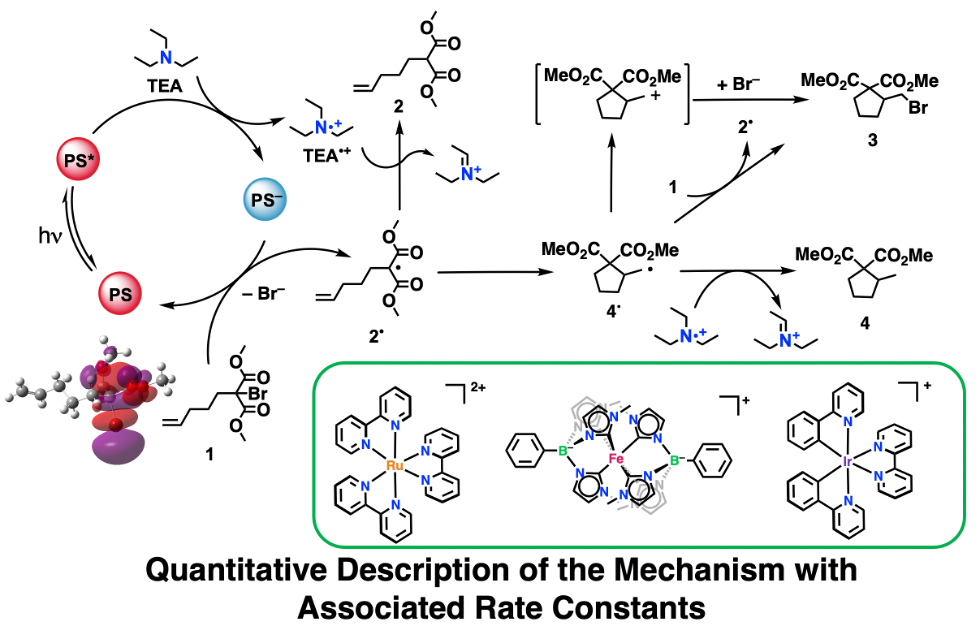 The mechanism of a visible light-driven dehalogenation/cyclization reaction was investigated using ruthenium(II), iridium(III) and iron(III) photosensitizers by means of steady-state photoluminescence, time-resolved infrared spectroscopy, and nanosecond/femtosecond transient absorption spectroscopy. The nature of the photosensitizer was found to influence the products distribution such that the dehalogenated, non-cyclized products were only detected for the iron photosensitizer. Strikingly, with the iron photosensitizer, large catalytic yields required a low dielectric solvent such as dichloromethane, consistent with a previous publication. This low dielectric solvent allowed ultrafast charge-separation to outcompete geminate charge recombination and improved cage escape efficiency. Further, the identification of reaction mechanisms unique to the iron, ruthenium, and iridium photosensitizer represents progress towards the long-sought goal of utilizing earth-abundant, first-row transition metals for emerging energy and environmental applications.
The mechanism of a visible light-driven dehalogenation/cyclization reaction was investigated using ruthenium(II), iridium(III) and iron(III) photosensitizers by means of steady-state photoluminescence, time-resolved infrared spectroscopy, and nanosecond/femtosecond transient absorption spectroscopy. The nature of the photosensitizer was found to influence the products distribution such that the dehalogenated, non-cyclized products were only detected for the iron photosensitizer. Strikingly, with the iron photosensitizer, large catalytic yields required a low dielectric solvent such as dichloromethane, consistent with a previous publication. This low dielectric solvent allowed ultrafast charge-separation to outcompete geminate charge recombination and improved cage escape efficiency. Further, the identification of reaction mechanisms unique to the iron, ruthenium, and iridium photosensitizer represents progress towards the long-sought goal of utilizing earth-abundant, first-row transition metals for emerging energy and environmental applications.
Aydogan, A.; Bangle, R. E.; Kreijger, S. D.; Dickenson, J. C., Singleton, M. L., Cauët, E.; Cadranel, A.; Meyer, G. J.; Elias, B.; Sampaio, R. N., Troian-Gautier, L. Mechanistic Investigation of a Visible Light Mediated Dehalogenation/Cyclisation Reaction using Iron(III), Iridium(III)and Ruthenium(II) Photosensitizers. Catal. Sci. Technol. 2021, 11 (24), 8037-8051. https://doi.org/10.1039/D1CY01771C